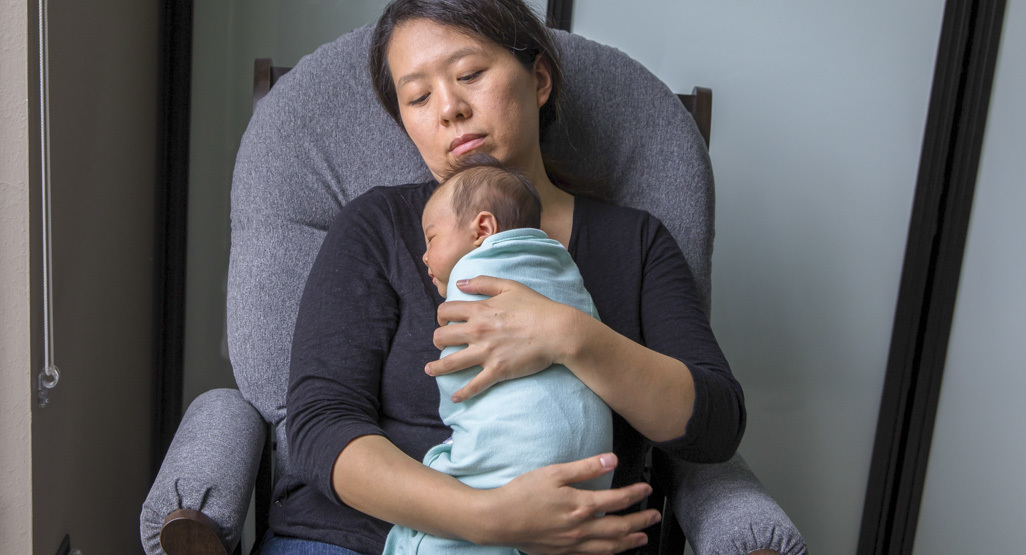In this article
Why do I need stitches after my delivery?
The area between your vagina and your anus (perineum) has to stretch a lot during a vaginal delivery.Often it stretches so much that it tears. Most obstetricians in India prefer to make a surgical cut when the perineum starts to stretch. This cut is known as an episiotomy.
Sometimes an episiotomy tears deeper along the line after the cut has been made.
If you have a deep tear or an episiotomy, you’ll need stitches to help the tissue and skin heal.
Sometimes, shallow tears that involve just the skin layers (not muscle) don’t need stitches. These are called first degree tears. If you’re lucky to not have had an episiotomy, and you only get a first degree tear, you might not get stitches at all.
How long will vaginal stitches take to heal?
Stitches usually dissolve on their own within two weeks after delivery, but the wound will take longer to heal fully. How quickly your wound heals depends on how deep your tear or episiotomy cut was.A typical episiotomy or a second-degree tear in which the muscle has been cut or ripped usually heals in two to three weeks. Some women feel pain and discomfort for a month or two.
If the episiotomy cut tears deeper and you have a third- or fourth-degree tear - a tear that extends to the rectum - you may have pain and discomfort for longer.
Third and fourth degree tears can happen to anyone. In the first few days after birth, you may have trouble urinating and passing bowel movements. You're also more likely to have problems controlling gas or bowel movements (anal incontinence) for months, or even years.
Your episiotomy cut is more likely to tear deeper if:
- it's the first baby you've had vaginally
- your baby is born in a back-to-back position
- the pushing stage of your labour goes on for longer than expected
- your baby weighs more than 4kg
- you've had a deep cut in a previous delivery
- you have an assisted birth, where your baby is born with the help of forceps or ventouse.
- one of your baby’s shoulders becomes stuck behind your pubic bone (shoulder dystocia) during birth
How should I look after my vaginal stitches?
Once you get home, try not to sit for long if you have stitches, at least for the first few days. Sitting puts the weight of your body on your pelvic floor. Instead, try to stand, walk, lie down or sit in a reclined position.Do pelvic floor exercises, also known as Kegels, to improve blood circulation to the area. This will help the wound heal and strengthen your muscles, which will help with urine leaks.
Complete the course of antibiotics your doctor will put you on after your delivery and take them on time. These will help to guard against infection.You might also be given laxatives to make it easier to poo without straining your stitches.
Here are some more steps you can take to keep your stitches clean and help them heal:
- Have a bath every day.
- Change your sanitary pad regularly.
- Wash your hands before and after cleaning the area.
- Expose your stitches to the air for 10 to 20 minutes. You can lie on your bed with a towel under you to air out your wound. Airing them out will help the would dry up and heal.
- Wear comfortable cotton panties that allow the skin to breathe well.
- Drink plenty of water to prevent constipation and the strain that puts on your wound when you poo.
- Clean the area after going to the loo and apply the ointment prescribed by your doctor.
What can I do about the pain around my vagina?
For the first few days after birth, your doctor will give you painkillers. Soon though, you’ll find you’ll be able to manage without them.You can ease pain and discomfort further with some of these self-help tips:
- Keep a cold or hot pack on your perineum. For the first few days, a cold pack is good to help reduce swelling in the area. Once the swelling has subsided, heat from a hot pack can soothe discomfort from stitches.
- Pour a mug of warm water over the area while you pee. Gently dab your stitches dry with toilet paper after.
- Sit in a tub of hot water mixed with a few drops of antiseptic, for five to 10 minutes at a time. You can do this twice a day for as long as you feel that your stitches pinch you. This is called a Sitz bath and it helps to relieve pain.
- Take it easy. Being up and about is good for your blood circulation, but if you develop a heavy, dragging feeling in your perineum, it’s a sign you need to rest. Lie down for some time before going on with your day.
- Don't use tampons until you have completely healed, and the area has been checked by your doctor.
- Don't sit crossed legged as this can stretch your perineum and pull at your stitches.
When should I call the doctor if I’m worried about my stitches?
Your doctor will schedule an appointment with you before you leave the hospital to check on your stitches and how the wound is healing. This check-up usually happens after your confinement period, at six weeks after delivery.If you’re worried before that, you can speak to your doctor over the phone about your symptoms. There are some warning signs to look out for that indicate a problem. Call your doctor right away if:
- your stitches become more painful with time instead of less.
- your stitches become smelly or you have smelly discharge.
- you have to rush to the toilet to poo and have difficulty controlling when it comes out (such as leaking poo when you pass gas).
- peeing is painful and you need to go often.
- you have a severe pain in your lower tummy, or around your perineum.
- you have fever.
- your sanitary pad shows large blood clots or you have very heavy bleeding.
Will my stitches cause problems in the future?
This depends on how severe or deep your tear was. A small number of women who had third or fourth degree tears have long-term perineal pain or problems with controlling when they poo.Some women who had stitches after the birth may have pain during sex, or bladder problems.
These are not a natural result of childbirth, or just part of being a mum, so you don't have to tolerate them. If your discomfort and symptoms don’t improve with time, you can see a women's health physiotherapist for pelvic floor rehabilitation. With the right treatment, most problems caused by stitches can be helped or cured.
Before you seek professional help, try doing regular pelvic floor exercises, also known as Kegels. Often these symptoms improve with regular Kegel exercises.
Read this article in Hindi: नॉर्मल डिलीवरी के बाद टांके
Read more on:
- Your pelvic floor after birth
- Postnatal symptoms you should never ignore
- I've just gone back on the Pill and I'm spotting. Is this normal?
References
Aasheim V, Nilsen AB, Reinar LM, et al. 2017. Perineal techniques during the second stage of labour for reducing perineal trauma. Cochrane Database Syst Rev. (3)CD006672 www.onlinelibrary.wiley.com [Accessed November 2017]Andrews V, Thakar R, Sultan AH, et al. 2008. Evaluation of postpartum perineal pain and dyspareunia - a prospective study. European Journal of Obstetrics & Gynecology and Reproductive Biology 137(2):152-156
Beckmann MM, Stock OM. 2013. Antenatal perineal massage for reducing perineal trauma. Cochrane Database Syst Rev (3):. www.onlinelibrary.wiley.com [Accessed November 2017]
Brauer M, ter Kuile MM, Laan E. 2009. Effects of appraisal of sexual stimuli on sexual arousal in women with and without superficial dyspareunia. Arch Sex Behav. 38(4):476–485
CUH/NHS. 2017. Complications of Birth. Shoulder dystocia. Cambridge University Hospitals NHS Foundation Trust. www.cuh.nhs.uk [Accessed November 2017]
Dalton E, Castillo E. 2014. Post partum infections: A review for the non-ObGyn. Obstetric Medicineonline:27 Feb. www.ncbi.nlm.nih.gov [Accessed November 2017]
Hayman R. 2014. Operative birth. In: Fraser DM, Cooper MA. eds. Myles Textbook for Midwives. 16th ed. Edinburgh: Churchill Livingstone, 456-473
Ismail KMK, Kettle C, Macdonald SE, et al. 2013. Perineal Assessment and Repair Longitudinal Study (PEARLS): a matched-pair cluster randomized trial. BMC Medicine 11:209
Kettle C, Dowswell T, Ismail KMK. 2012. Continuous and interrupted suturing techniques for repair of episiotomy or second-degree tears. Cochrane Database of Systematic Reviews (11): CD000947 onlinelibrary.wiley.com [Accessed November 2017]
Lappen J. 2016. Episiotomy and repair technique. Medscape emedicine.medscape.com [Accessed November 2017]
NHS. 2015a. Vagina changes after birth. NHS Choices, Live well. www.nhs.uk [Accessed November 2017]
NHS. 2015b. You and your body just after birth. NHS Choices, Health A-Z, Pregnancy and baby. www.nhs.uk [Accessed November 2017]
NHS. 2015c. Can I take ibuprofen while I’m breastfeeding? NHS Choices, Common health questions. www.nhs.uk [Accessed November 2017]
NHS. 2017. Episiotomy. NHS Choiceswww.nhs.uk [Accessed November 2017]
NICE. 2006. Postnatal care up to 8 weeks after birth. Last modified 2015. National Institute of Health and Care Excellence, Clinical Guideline, 37. www.nice.org.uk [Accessed November 2017]
OUH/NHS. 2014. Care of the perineum after the birth of your baby. Oxford University Hospitals NHS Trust www.ouh.nhs.uk [Accessed November 2017]
QG. 2012. Queensland Maternity and Neonatal Clinical Guideline: Perineal care. Queensland Government. www.health.qld.gov.au [Accessed November 2017]
RCM. 2013. How to provide postnatal perineal care. Royal College of Midwives, Analysis. www.rcm.org.uk [Accessed November 2017]
RCOG. 2015. A third- or fourth-degree tear during birth (also known as obstetric anal sphincter injury – OASI): information for you. Royal College of Obstetricians and Gynaecologists. www.rcog.org.uk [Accessed November 2017]
Complementary Therapies in Clinical Practice 18(1):66-70 www.ncbi.nlm.nih.gov [Accessed November 2017]
BMC Pregnancy & Childbirthonline:07 Mar. www.bmcpregnancychildbirth.biomedcentral.com [Accessed November 2017]
Society of Obstetricians and Gynaecologists of Canada www. sogc.org [Accessed November 2017]
Myles Textbook for Midwives. 16th ed. Edinburgh: Churchill Livingstone, 312-325
Wheeler J, Davis D, Brodie PM, et al. 2012. Is Asian ethnicity an independent risk factor for severe perineal trauma in childbirth? A systematic review of the literature. Women and Birth 25(3):107-13
Zhou D, Gong H, He S, et al. 2017. Effects of combined spinal epidural labor analgesia on episiotomy: a retrospective cohort study. BMC Anesthesiologyonline: 28 Jun. www.bmcanesthesiol.biomedcentral.com [Accessed November 2017]





